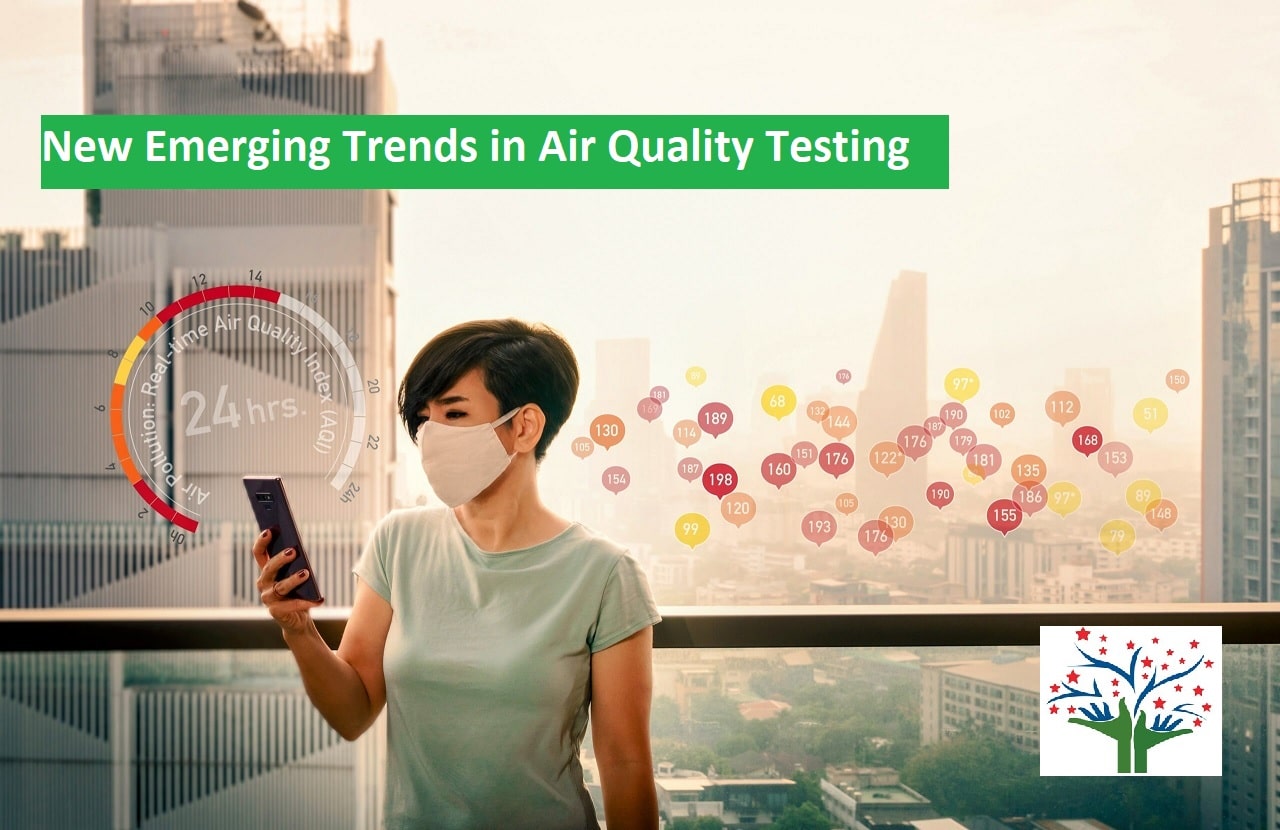
trends in air quality monitoring by Perfect Pollucon Services
This article explores the latest trends in air quality testing, highlighting the advancements, challenges, and opportunities that are shaping the way we monitor and address air pollution.
Air quality testing plays a vital role in understanding the levels of pollutants in the atmosphere and their impact on human health and the environment. Over the years, significant advancements in technology, evolving regulatory frameworks, and increased public awareness have shaped the field of air quality testing.
One of the notable trends in air quality testing is the adoption of real-time monitoring systems. Traditional methods relied on periodic sampling and laboratory analysis, limiting the ability to capture immediate variations in pollutant levels.
However, with the advent of advanced sensor technology, it is now possible to monitor air quality continuously and obtain instant data on pollutant concentrations. Real-time monitoring systems provide more accurate and timely information, enabling prompt action to mitigate air pollution.
Read More about Air Quality Testing & Monitoring
The Internet of Things (IoT) has revolutionized air quality testing by allowing for the integration of sensors, data collection devices, and communication networks. IoT-based air quality monitoring systems use interconnected sensor networks to collect data in real-time from multiple locations.
These systems provide comprehensive insights into pollutant levels, spatial variations, and sources. The collected data can be analyzed using advanced analytics platforms, facilitating informed decision-making and effective pollution control strategies.
Mobile air quality monitoring platforms are gaining popularity due to their ability to measure pollutant levels in different locations. Equipped with sensors mounted on vehicles or drones, these platforms enable on-the-go monitoring across large areas.
Mobile monitoring is particularly useful in assessing pollutant concentrations near roads, industrial sites, or areas with temporary emissions sources. It provides a more comprehensive understanding of spatial variations and hotspots of air pollution.
Traditionally, air quality testing focused on specific pollutants such as particulate matter (PM) or nitrogen dioxide (NO2). However, there is a growing recognition of the need to assess multiple pollutants simultaneously for a comprehensive understanding of air quality.
Advanced monitoring systems now incorporate the measurement of various pollutants, including volatile organic compounds (VOCs), ozone (O3), carbon monoxide (CO), and sulfur dioxide (SO2). This multi-pollutant approach provides a holistic view of air quality and facilitates the identification of complex pollution sources.
With the increasing volume of air quality data being collected, there is a need for effective data integration and visualization tools. Data integration involves combining information from multiple sources, such as monitoring stations, satellite observations, and meteorological data, to create comprehensive air quality models.
Visualization tools help in presenting complex data in a user-friendly and accessible manner, allowing stakeholders to interpret and act upon the information effectively.
Citizen science initiatives are empowering individuals and communities to actively participate in air quality monitoring. With the availability of personal air quality monitoring devices, citizens can contribute to data collection efforts. Crowdsourced data enhances existing datasets and provides valuable insights into pollution levels in various locations.
Citizen science projects not only raise awareness about air pollution but also encourage public engagement and advocacy for policy changes.
Analytical techniques used in air quality testing have also witnessed advancements. Traditional laboratory-based methods are being complemented by portable, handheld devices that offer rapid and on-site analysis.
These advancements in analytical techniques enable quicker data collection and analysis, facilitating timely decision-making and response to air pollution incidents.
The integration of artificial intelligence (AI) and machine learning (ML) techniques is revolutionizing air quality testing. These technologies can analyze vast amounts of air quality data, identify patterns, and predict future pollution events.
AI and ML algorithms can aid in the development of early warning systems, help optimize pollution control strategies, and provide insights for urban planning and policy-making.
Unfortunately, air pollution is indeed getting worse on a global scale. Despite efforts to address the issue, the rapid industrialization, urbanization, and increased energy consumption have contributed to the worsening air quality.
The burning of fossil fuels, emissions from transportation, industrial activities, and agricultural practices release harmful pollutants into the atmosphere, leading to a rise in particulate matter, nitrogen oxides, sulfur dioxide, and volatile organic compounds. The impacts of climate change also exacerbate air pollution, further compromising the quality of the air we breathe.
The detrimental effects of air pollution on human health and the environment emphasize the urgent need for collective action to reduce emissions, promote sustainable practices, and prioritize the improvement of air quality worldwide.
The trends in air quality testing demonstrate the ongoing efforts to enhance the accuracy, timeliness, and accessibility of air pollution data. Real-time monitoring, IoT integration, mobile platforms, multi-pollutant assessment, data integration, citizen science, and advances in analytical techniques and AI/ML are shaping the future of air quality testing.
These trends present both challenges and opportunities in addressing air pollution, protecting public health, and implementing effective pollution control measures. By embracing these advancements, stakeholders can work together to create cleaner and healthier environments for present and future generations.